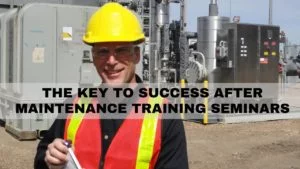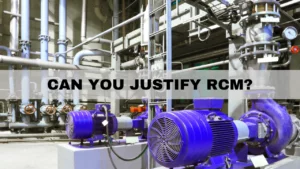In the first part of this series of columns on Preventive Maintenance (PM) I talked about the necessity of having a good route based function in your Computerized Maintenance Management System (CMMS) to support easy administration of route based Preventive Maintenance activities.
In this column I will comment on some common reasons, as to why your Preventive Maintenance program might not always work as well as you would like it to work.
Wrong content
If your program does not have the right content, it is not generating the desired results. If your program has not been thoroughly updated in the last five years, it most probably contains, not only too much Preventive Maintenance, but also the wrong activities. A good PM program has 90+% of all PM activities done as inspections while equipment is running and less than 10% are PM activities that require down time to be done.
Classical examples of wrong and excessive PM, are Preventive Maintenance activities on V-Belt drives and couplings and many other components with a safety guards. Many PM programs suggest that these components are inspected weekly by maintenance crafts people and every shift by operators. On top of that a shut down PM is also done every six months. The fact is, that most of the guards are designed in such a way that the components can not be inspected while equipment is operating, and it does not make sense to inspect something that can not be seen.
Many guards are big and heavy, so it can take two crafts people several hours to take off guards, do the inspections and replace the guards during a shut down. Even worse, if they would find a problem on the component during this inspection and this problem has to be corrected before start up, then this could lead to a prolonged shut down.
If guards are designed in the right way, the only PM to be done should be inspections on the run. In a route based inspection program, each of these inspections takes an average of about three minutes including walking time. If a problem is found during these inspections, a planned and scheduled corrective maintenance action will be done when the next opportunity to do so presents itself.
To decide on the right content, you must understand three things.
1. The consequence of a break down of the component.
2. How a failure can be detected.
3. How long before a break down of the component a failure can be detected.
Consequence of a break down
A break down is defined as the point in time when a components function ceases. The consequence of a break down can be prioritized in following groups.
1. Personal or environmental damage.
2. High costs for production losses or maintenance to correct break down.
3. Preserve value.
As a first step it is a good advise to not go into any elaborate and time consuming evaluation to find the criticality of equipment. That can be done later. We use the following fast approach to evaluate criticality:
A. Ask yourself what will happen if this equipment breaks down?
For 90% of equipment the answer is given by reading the name plate of equipment and understanding the process. If there is a spare equipment. How fast can this spare equipment be started etc.
B. Ask Operators If we do not know the answer to the first question, we will ask an operator. That will take care of about another 50% of the remaining questions.
C. Consult process and Instrumentation drawings
If the operator does not know the answer it is bad, but it is also identifying a training opportunity. Together we will look at a process and instrumentation drawing to learn what will happen if the equipment breaks down. This will answer most of the remaining of unanswered questions.
With this screening process you only need to analyze what is important to analyze and you save more than 90% of time as compared to processes suggested in Reliability Centered Maintenance and similar programs.
Using the same approach as above the next step will be to set up the right PM for each component (Coupling, valve, cooler etc.) of the equipment. ( E.g. Hydraulic system).
CMMS & Preventive maintenance 1 | CMMS & Preventive maintenance 3
Consider Preventive Maintenance training and implementation support from IDCON: More >





